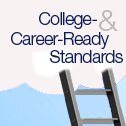
With policymakers focused heavily on the college readiness agenda, educators at the middle school level are working in a variety of ways to make sure that young adolescents are ready to do well in high school.
(If you’ve been in this game a while, you probably recall research showing that 9th grade is a key stumbling point for adolescents, one where they’re more likely to drop out of school.)

One bit of news on the high school readiness front comes from a nonprofit organization called Spark, which recently won a $1.2 million grant to help 4,100 middle school students choose high schools and make smooth transitions into 9th grade.
Spark has already been running apprenticeship programs for 7th and 8th graders in those cities, as my colleague Caralee Adams mentioned in a story last summer about career preparation in middle schools.The three-year grant from the Michael & Susan Dell Foundation will enable the organization to expand its work with students in Los Angeles, Chicago, Philadelphia, and the San Francisco Bay Area who are showing signs of disengaging from school.
It will scale up work it piloted in Chicago, using counseling workshops to help students evaluate their options for high school, and to be prepared for the social and emotional parts of the transition, according to Spark officials. The work will also include a peer-to-peer support system that employs Spark program alumni, and use of a database and a guide that outlines the steps students must go through to apply to, and enroll in, high school.
Wrestling With Measures of Middle School Success
Another interesting project in high school readiness comes from California, in a group of six districts that have been pushing the boundaries on new kinds of accountability. The CORE districts are trying to design school measures that provide a more nuanced, detailed look at students’ progress, and that also encourage the kinds of school improvement they value.
In that spirit, one of the metrics the CORE districts wanted to use in their new approach to accountability was to track students not just from 8th grade into 9th, but right on into 10th grade.
When leaders of the district consortium analyzed the data, however, they wondered if they’d set their sights on the wrong thing. They were surprised to find reasonably good transition rates by 10th grade, Oakland Unified school district Superintendent Antwan Wilson writes in a recent piece for EdSource. They realized that clinging to that metric would obscure another serious problem lurking beneath the data.
“When we dug into the data a little more deeply, it became clear that many of those 10th grade students were so deficient in school credits that they were not truly on a path to graduating from high school,” Wilson writes. “Using our original metric—the percentage of 8th graders who were still enrolled in high school in the 10th grade—might make schools appear to be on the right track, but would not raise the red flags we desired to ensure the entire system focused on the kids in need of intervention.”
The CORE districts decided to base their high school readiness metric on students’ attendance, grades, and history of suspensions from school—factors that proved to be better indicators of high school success than simply having “made it” into 10th grade. They’re still working on other measurements for middle and high school, and the conversations to figure that out have been “deep, and at times challenging,” Wilson writes, but the work will hopefully produce a system that both tracks and supports adolescent students.
